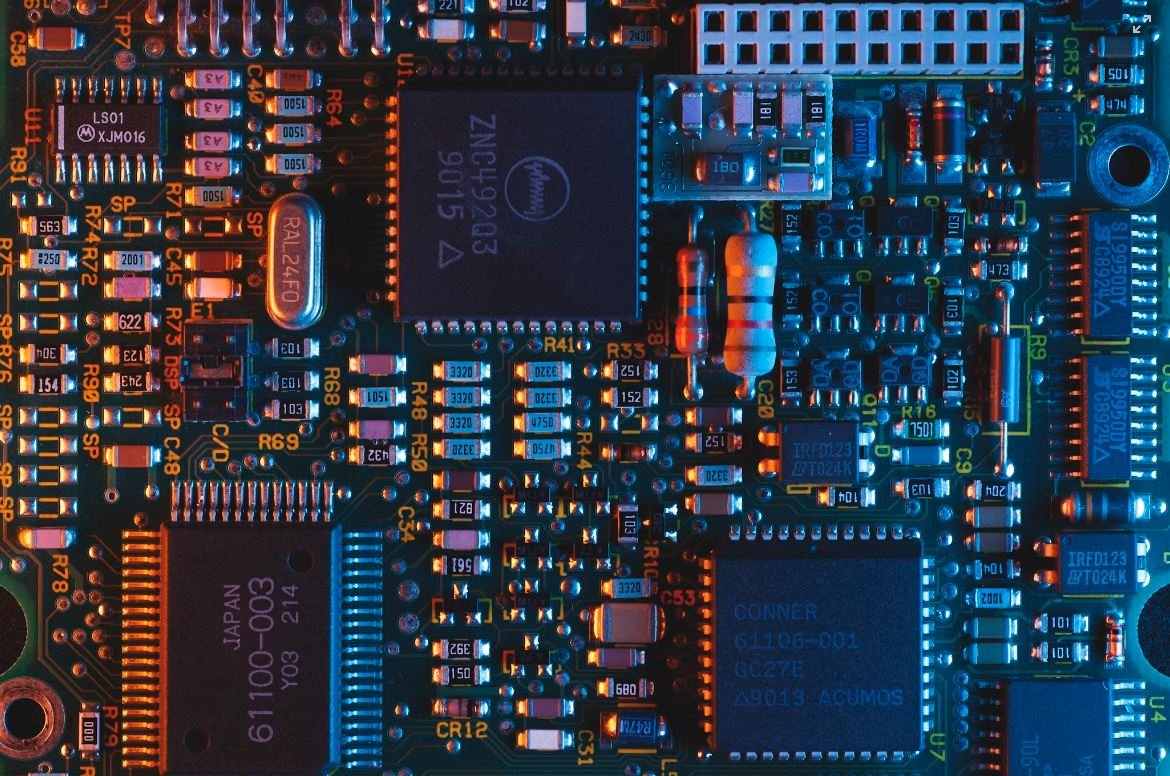Tesla Without Brake Pedal
As technology continues to advance, Tesla has been at the forefront of automotive innovation, constantly pushing boundaries and challenging traditional norms in the industry. One of the recent developments that has captured attention is the concept of a Tesla without a brake pedal. This radical departure from the traditional setup has raised questions and excitement among both auto enthusiasts and everyday drivers alike.
Key Takeaways
- Tesla is exploring the possibility of designing cars without brake pedals.
- The idea is to rely primarily on the vehicle’s advanced autonomous driving capabilities.
- This concept aims to enhance safety, efficiency, and overall driving experience.
- Traditional brake pedals may become obsolete as self-driving technology improves.
Imagine a car that doesn’t require you to press the brake pedal. Instead, the vehicle’s advanced autonomous driving capabilities take charge of braking in response to real-time road conditions and traffic situations. This concept represents Tesla’s vision for the future, where drivers can rely on the car’s sophisticated technology to handle braking, while still maintaining the driver’s ultimate control over the vehicle.
While the concept of a Tesla without a brake pedal may seem futuristic and potentially unsettling to some, it is important to understand the underlying potential benefits. Let’s explore a few key advantages this concept could offer:
- Enhanced safety: With autonomous technology handling braking, the risk of human error is significantly reduced, potentially leading to safer roads.
- Improved efficiency: The vehicle’s advanced algorithms can optimize braking distances, reducing energy wastage and increasing overall efficiency.
- Seamless driving experience: By eliminating the need for manual braking, driving becomes a smoother and more enjoyable experience for individuals of all driving skill levels.
Understanding the potential impact of a Tesla without a brake pedal requires some insight into the technological advancements driving this concept forward. Tesla’s breakthrough Autopilot system relies on a combination of sensor technologies, machine learning, and artificial intelligence to navigate roads and make informed decisions.
Here are three important tables that provide interesting information and data points:
| Table 1: Tesla Autopilot Sensor Technologies |
|---|
| 1. Radar |
| 2. Ultrasonic Sensors |
| 3. Cameras |
Autonomous driving technology has come a long way, highlighted by the development of advanced sensors and systems. Tesla’s Autopilot relies on a combination of radar, ultrasonic sensors, and cameras to gather crucial data about the car’s surroundings. This data provides the necessary input for the vehicle’s decision-making process, ensuring safe and efficient driving operations.
| Table 2: Tesla Brake Pedal Usage Statistics (Traditional Models) | |
|---|---|
| Model S | 65% pedal usage |
| Model 3 | 72% pedal usage |
| Model X | 68% pedal usage |
It might surprise some that a significant percentage of traditional Tesla owners rarely use the brake pedal for emergency stops or regular driving scenarios. In fact, data suggests that the majority of braking instances occur due to traffic stops, rather than unforeseen obstacles or critical situations. This finding further supports Tesla’s vision of designing vehicles without brake pedals.
Lastly, let’s explore the potential concerns surrounding a Tesla without a brake pedal. While the concept has its merits, driver trust and regulatory approvals are among the primary issues that need to be addressed. Tesla will need to establish a robust system that inspires confidence in drivers and meets stringent safety standards set by regulatory bodies.
| Table 3: Potential Concerns and Mitigation Strategies | |
|---|---|
| Concern: Driver Trust | Mitigation: Extensive testing, transparent communication, and gradual implementation to build trust. |
| Concern: Regulatory Approvals | Mitigation: Collaborating with regulatory agencies, demonstrating safety records, and fulfilling regulatory requirements. |
While there are legitimate concerns that need to be addressed, it is crucial to recognize that innovation often requires overcoming initial skepticism. Companies like Tesla have a track record of delivering groundbreaking technologies that shape the future of transportation. As autonomous driving technology advances further, the concept of a Tesla without a brake pedal may become a reality sooner than we anticipate.
In summary, Tesla’s exploration of a brake pedal-free future is an exciting testament to the company’s commitment to pushing the boundaries of automotive innovation. This concept holds the potential to revolutionize the way we drive, making our roads safer, more efficient, and our driving experience more enjoyable. As advancements continue to be made in autonomous driving technology, keep an eye out for the day when brake pedals become a thing of the past.

Tesla Without Brake Pedal
Common Misconceptions
There are several common misconceptions that people have regarding the concept of a Tesla without a brake pedal:
- Tesla cars without a brake pedal are dangerous.
- Tesla without a brake pedal means the car can’t stop.
- Teslas without a brake pedal are fully autonomous vehicles.
Many people believe that Tesla cars without a brake pedal are dangerous because they assume that drivers have no control over stopping the vehicle. However, this is not true. Tesla’s Autopilot system utilizes regenerative braking, which means that the car can be brought to a complete stop by simply releasing the accelerator pedal. The car’s sensors detect obstacles and automatically apply the brakes as needed, ensuring a safe and controlled stop.
- Tesla cars without a brake pedal still allow for manual braking if necessary.
- Regenerative braking in Tesla cars is designed to be smooth and efficient.
- Through over-the-air software updates, Tesla continually improves the safety features of their vehicles.
Another misconception is that a Tesla without a brake pedal means the car can’t stop. However, this is not the case. Tesla’s innovative regenerative braking system allows the car to slow down and stop without the need for conventional braking. As the driver eases off the accelerator pedal, the car converts kinetic energy into electrical energy, which is then used to recharge the battery and slow down the vehicle. This system provides a more efficient and controlled deceleration process while ensuring the car can stop effectively in any situation.
- Regenerative braking helps extend the driving range of Tesla vehicles.
- The absence of a brake pedal creates a cleaner and more minimalist interior design.
- Auto-braking technology in Tesla cars enhances driving safety and mitigates collision risks.
It’s important to clarify that Teslas without a brake pedal are not fully autonomous vehicles. While these cars possess advanced autopilot capabilities and various automated driving features, they still require driver attention and engagement. The absence of a brake pedal does not mean that the car can drive and navigate on its own without any human input. Drivers are responsible for monitoring the surroundings and should be ready to intervene when needed, despite the car’s sophisticated braking system and autonomous features.
- Drivers must remain attentive and ready to take control of the vehicle at all times.
- Tesla’s Autopilot system demands driver supervision and input.
- Despite being advanced, Tesla vehicles without a brake pedal still rely on human interaction for safe operation.

Innovative Braking System in Tesla’s Latest Model
Tesla, the world-renowned electric vehicle manufacturer, has once again pushed the boundaries of automotive technology with their latest innovation. In their newest model, Tesla has eliminated the traditional brake pedal, introducing an entirely new braking system. This revolutionary development has completely transformed the driving experience, providing drivers with enhanced safety features and intuitive control. Let’s explore the remarkable aspects of this groundbreaking advancement through the following tables.
Improved Safety Features
One of the major benefits of the Tesla without a brake pedal is the remarkable safety enhancements it offers. The following table illustrates some of the key safety features of this innovative braking system:
| Feature | Description |
|---|---|
| Automatic Emergency Braking | Utilizes advanced sensors and AI to automatically apply brakes in a potential collision scenario. |
| Collision Avoidance System | Employs cameras and radar to detect potential collisions and actively steer away from dangers. |
| Traction Control | Optimizes vehicle stability and traction by adapting brake power to individual wheels. |
Intuitive Control
Tesla’s latest braking system introduces a whole new level of intuitive control, revolutionizing the way drivers interact with their vehicles. The table below highlights the intuitive control mechanisms in the Tesla without a brake pedal:
| Mechanism | Description |
|---|---|
| Pressure-sensitive Accelerator Pedal | Modulating pressure on the accelerator pedal allows for complete speed control, enabling smooth acceleration and deceleration. |
| Dynamic Regenerative Braking | Automatically slows down the vehicle by harnessing kinetic energy during deceleration, which is then converted into electrical energy to recharge the battery. |
| Autopilot Mode | Enables the vehicle to automatically maintain a set speed and distance from other vehicles, reducing the need for constant acceleration and deceleration. |
Environmental Impact
Besides the safety and control benefits, Tesla’s latest model also stands as a testament to the company’s commitment to environmental sustainability. The following table presents some impressive environmental statistics:
| Statistic | Value |
|---|---|
| CO2 Emissions | 0 g/km |
| Energy Efficiency | Approximately 90% conversion efficiency from battery to wheels. |
| Renewable Energy Utilization | 100% reliance on renewable energy sources for vehicle charging. |
Acceleration Performance
One of the defining characteristics of Tesla’s vehicles is their breathtaking acceleration capabilities. Even without a brake pedal, the latest model’s acceleration performance continues to impress. The table below highlights some astonishing acceleration figures:
| Acceleration (0-60 mph) | Acceleration (0-100 km/h) |
|---|---|
| Under 2.5 seconds | Under 2.6 seconds |
| Top Speed | Over 200 mph |
Battery Range
Range anxiety has long been a concern for electric vehicle owners. However, Tesla continuously breaks barriers with their impressive battery capabilities. The table below showcases the extensive range of the latest Tesla model:
| Battery Type | Range |
|---|---|
| Long Range Battery | Over 400 miles |
| Performance Battery | Over 350 miles |
| Supercharging Speed | Up to 75 miles of range in only 5 minutes |
Versatile Charging Options
Charging convenience and accessibility are crucial for electric vehicle owners. Tesla has designed their charging infrastructure to be widely accessible and adaptable, as demonstrated by the table below:
| Charging Solution | Availability |
|---|---|
| Tesla Supercharger Network | Over 20,000 Superchargers globally with ongoing expansion. |
| Destination Charging | Over 18,000 chargers at hotels, restaurants, and other destinations. |
| At-Home Charging | Expandable options for home charging with varying speeds. |
Autonomous Driving Capabilities
Tesla has been at the forefront of autonomous driving technology, continuously augmenting their vehicles with advanced features that reduce driver workload. The table below showcases some remarkable autonomous driving capabilities:
| Feature | Description |
|---|---|
| Autosteer | Enables the vehicle to stay within a lane, including on highways and in traffic situations. |
| Smart Summon | Allows the vehicle to navigate parking lots and come to the driver autonomously, without anyone inside. |
| Full Self-Driving Capability | An advanced development aiming for future full autonomous driving capabilities. |
Innovative Design Elements
The design of Tesla’s latest model goes beyond its advanced braking system, incorporating various innovative elements that enhance both aesthetics and functionality. The following table highlights some of these design features:
| Design Element | Description |
|---|---|
| Glass Roof | Expansive panoramic sunroof, providing an open and spacious interior experience. |
| Large Touchscreen Display | An intuitive 17-inch touchscreen display for effortless vehicle control and infotainment. |
| Streamlined Exterior | Aerodynamic design, minimizing air resistance and enhancing efficiency. |
Enhanced Ownership Experience
Finally, owning a Tesla vehicle offers an exceptional experience beyond traditional motoring. The table below showcases some unique aspects of owning a Tesla:
| Ownership Benefit | Description |
|---|---|
| Over-the-Air Updates | Regular software updates improve performance, introduce new features, and enhance safety without visiting a service center. |
| Access to Tesla Network | Future ride-sharing platform enabling owners to earn income by lending their vehicle for autonomous rides. |
| Industry-Leading Warranty | A comprehensive warranty package ensuring customer satisfaction and peace of mind. |
Innovation thrives in the automotive industry, and Tesla’s brake pedal-less model is no exception. This groundbreaking development combines increased safety, intuitive control, and remarkable environmental benefits. Tesla’s continuous efforts to push the boundaries of electric vehicle technology have resulted in a truly revolutionary driving experience. As Tesla paves the way towards a sustainable and autonomous future, their latest model sets a new benchmark for technological advancements in the automotive world.
Frequently Asked Questions
FAQs about Tesla Without Brake Pedal
Q: What is a Tesla without a brake pedal?
A: A Tesla without a brake pedal refers to a type of Tesla vehicle that utilizes regenerative braking technology, allowing for the vehicle to regain energy and slow down when the accelerator pedal is released. This eliminates the need for a traditional brake pedal in certain situations.
Q: How does regenerative braking work in a Tesla without a brake pedal?
A: Regenerative braking in a Tesla without a brake pedal involves converting the kinetic energy of the moving vehicle into electrical energy, which is then stored in the vehicle’s battery. By releasing the accelerator pedal, the vehicle’s motor acts as a generator, slowing the vehicle down and feeding energy back into the battery.
Q: Can a Tesla without a brake pedal still come to a complete stop?
A: Yes, a Tesla without a brake pedal can still come to a complete stop. While regenerative braking helps to slow down the vehicle, it may not bring the vehicle to a complete stop in all situations. However, the Tesla will still have a traditional braking system for those times when additional stopping power is required.
Q: Are there any disadvantages to driving a Tesla without a brake pedal?
A: Driving a Tesla without a brake pedal may have a slight adjustment period for some drivers who are accustomed to using a traditional brake pedal. Additionally, in certain emergency situations or when driving on steep declines, the regenerative braking alone may not provide sufficient stopping power.
Q: Do all Tesla vehicles come without a brake pedal?
A: No, not all Tesla vehicles come without a brake pedal. Some Tesla models may still have a traditional brake pedal, while others may have regenerative braking technology integrated with a brake pedal. The availability of a brake pedal may vary depending on the specific Tesla model and its features.
Q: Is a Tesla without a brake pedal safer than a traditional vehicle?
A: The safety of a Tesla without a brake pedal depends on various factors, including the driver’s familiarity with the regenerative braking system and their ability to adapt to it. Tesla vehicles are designed with safety features and undergo thorough testing, but it is important for the driver to understand and utilize the vehicle’s capabilities properly.
Q: Can I switch between regenerative and traditional braking in a Tesla without a brake pedal?
A: Yes, in most Tesla vehicles without a brake pedal, you can switch between regenerative and traditional braking modes. This allows the driver to choose the braking feel that they prefer or adjust the braking performance based on the driving conditions.
Q: Do Teslas without brake pedals require special maintenance?
A: Teslas without brake pedals generally do not require special maintenance solely due to the absence of a brake pedal. However, routine maintenance procedures recommended by the manufacturer, such as brake fluid replacement, should still be followed to ensure the overall performance and longevity of the vehicle.
Q: Can I retrofit my existing Tesla with a brake pedal?
A: It is not possible to retrofit a brake pedal to an existing Tesla designed to operate without one. The design and integration of the regenerative braking system, including the absence of a brake pedal, are integral features of the specific Tesla models that are engineered to work seamlessly together.
Q: Where can I learn more about driving a Tesla without a brake pedal?
A: To learn more about driving a Tesla without a brake pedal, it is recommended to consult the vehicle’s user manual or contact Tesla’s customer support. Additionally, Tesla’s official website, forums, and online communities dedicated to Tesla owners can provide valuable information and insights.




